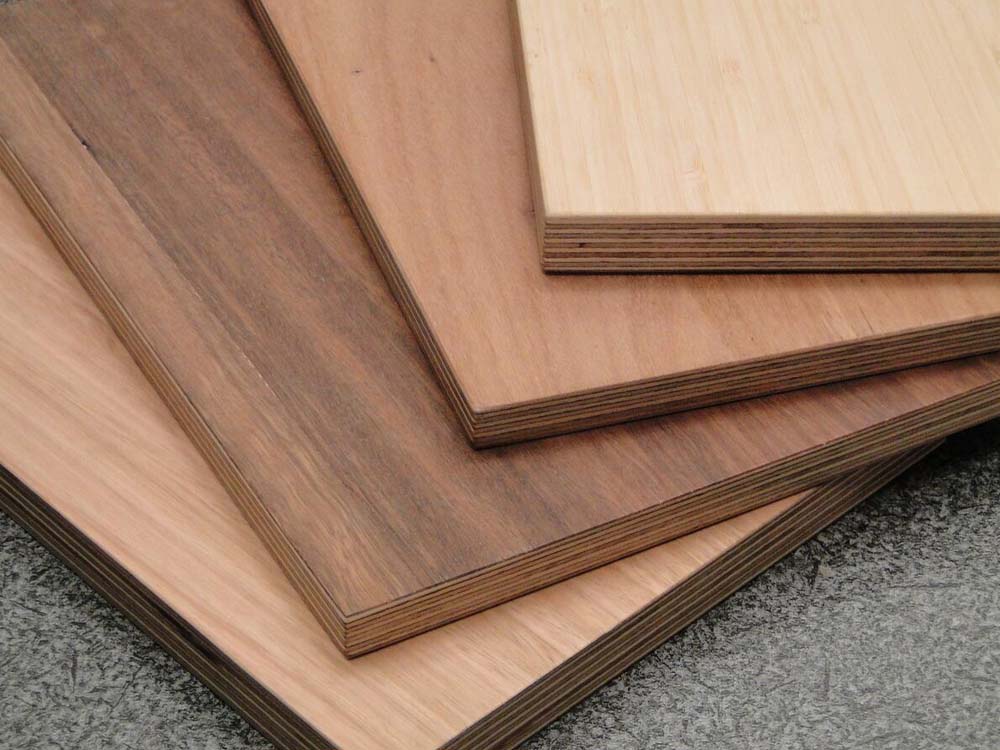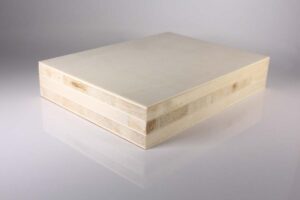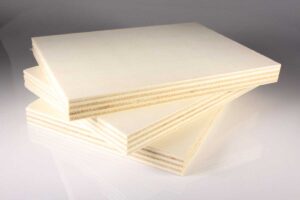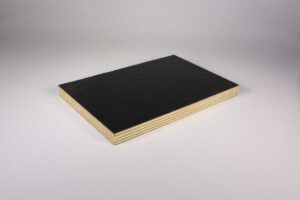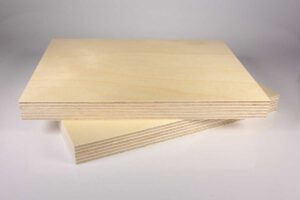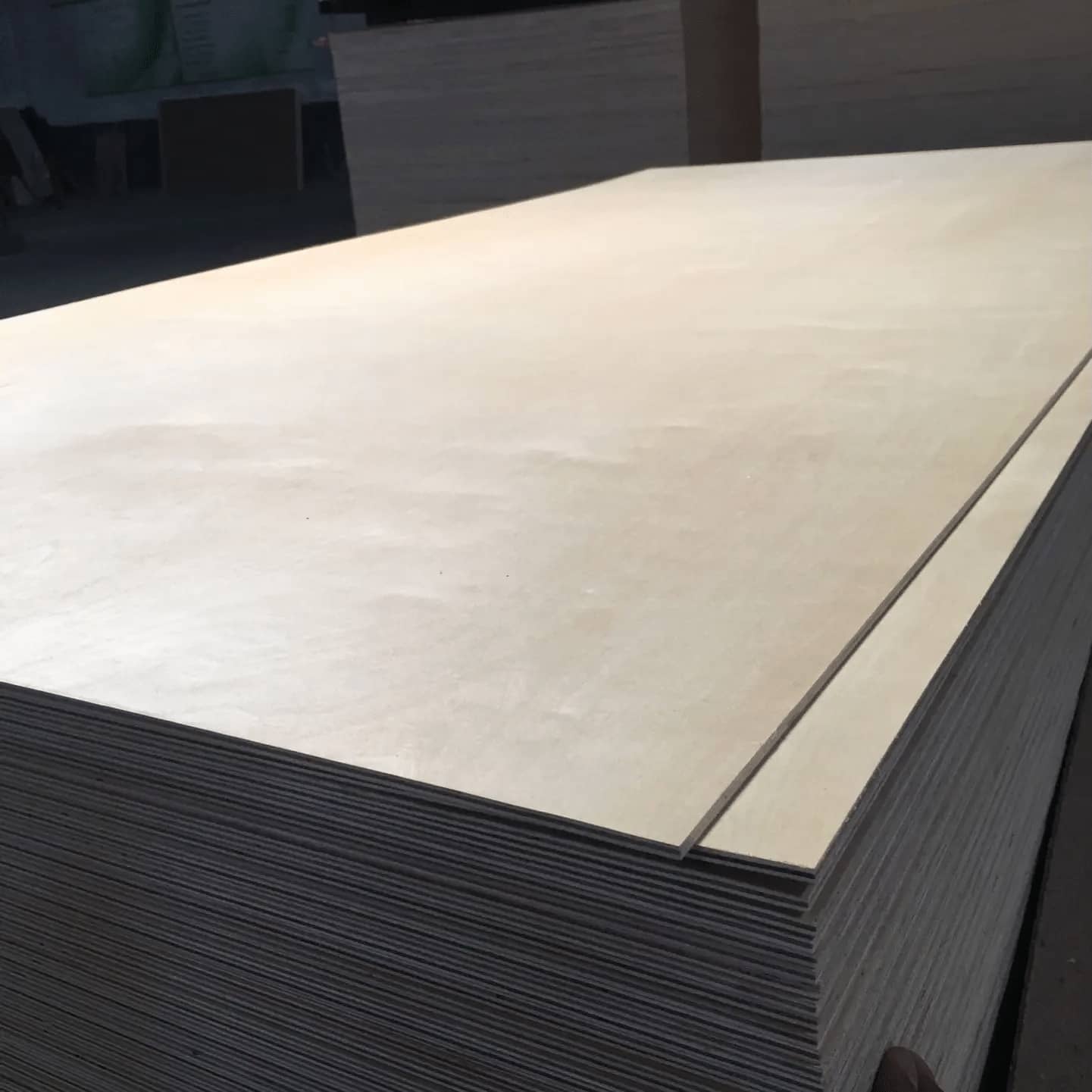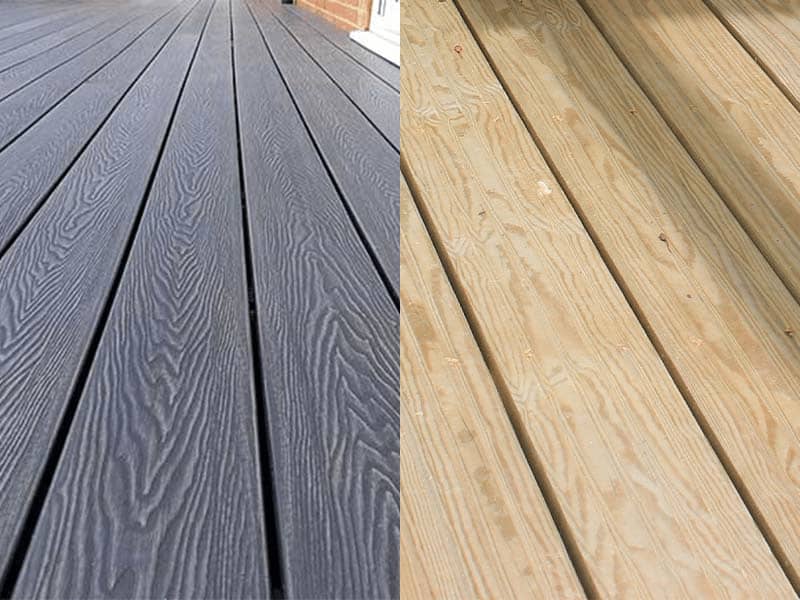From towering skyscrapers to cozy homes, construction projects rely on a foundation of strong, dependable materials. Construction plywood, often taken for granted, stands as a cornerstone of modern building, providing the strength, versatility, and cost-effectiveness that countless projects demand. Whether you’re a seasoned contractor or a newcomer to the world of construction, understanding the nuances of construction plywood can be the key to unlocking efficient, durable, and budget-friendly building solutions.
What Defines Construction Plywood?
Construction plywood, as its name suggests, is a type of plywood engineered specifically for demanding building applications. While it shares the same layered construction as other plywood types, it’s characterized by its focus on strength, structural integrity, and resistance to the rigors of construction sites.
Here’s a closer look at what sets construction plywood apart:
- Robust Core Construction: Unlike plywood intended for furniture or decorative applications, construction plywood often features a core constructed from softwood veneers, chosen for their strength and affordability. These veneers are layered with alternating grain directions and bonded with strong adhesives, creating a panel that can withstand heavy loads, impacts, and the stresses of construction environments.
- Focus on Functionality: While aesthetics are a consideration, construction plywood prioritizes functionality and structural performance. The face veneers, while still sanded smooth, may exhibit more natural wood characteristics like knots and grain variations, as their primary role is to provide a stable and durable surface for structural applications rather than a polished finish.
- Variety of Treatments and Grades: Construction plywood comes in a range of treatments and grades to suit specific applications and exposure levels. From moisture-resistant plywood for exterior sheathing to fire-retardant plywood for specific building codes, you’ll find a construction plywood engineered to meet the demands of your project.
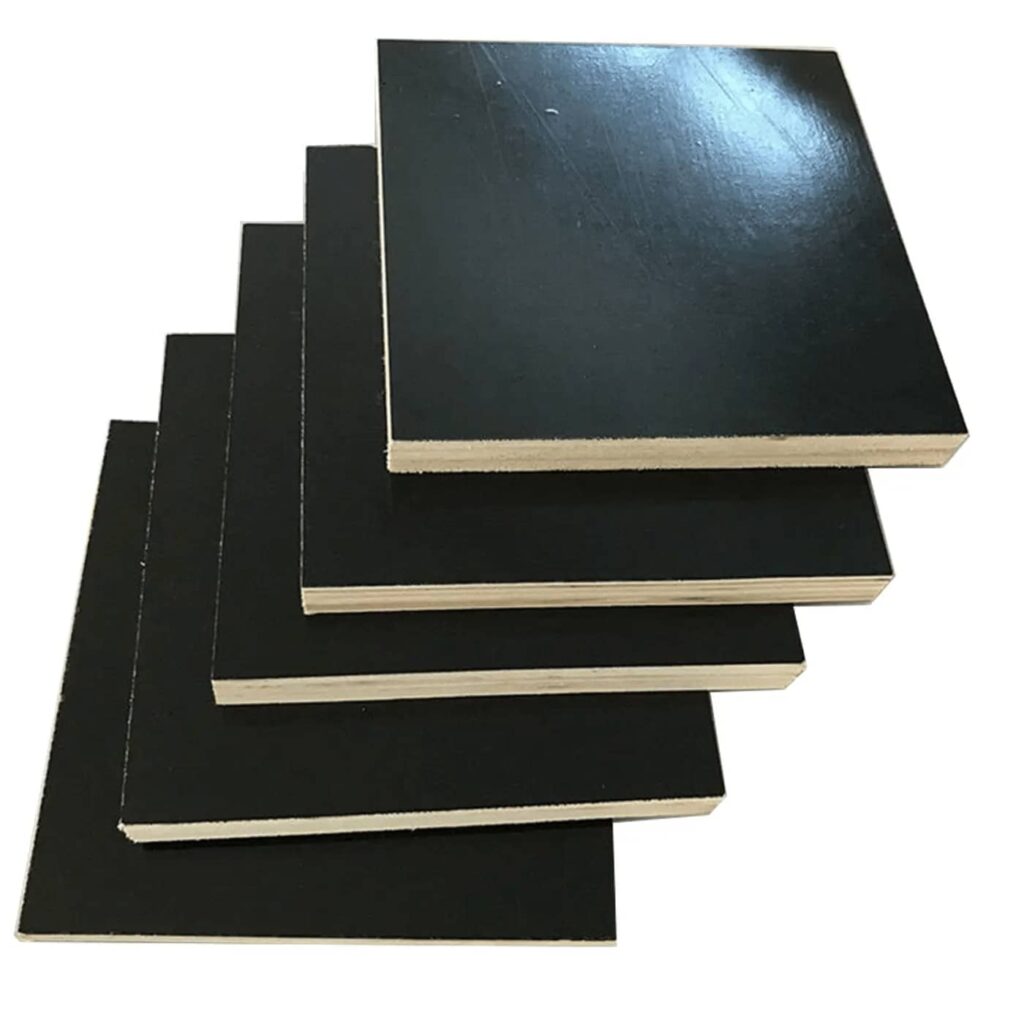
Why Construction Plywood Remains a Building Essential
In an age of innovative building materials and techniques, construction plywood remains a staple on construction sites for a multitude of reasons.
Let’s explore the compelling advantages that make construction plywood a go-to material for builders and contractors:
- Unmatched Strength and Stability: The cross-grained construction of plywood, where each veneer layer’s grain runs perpendicular to its adjacent layers, creates a panel that’s remarkably strong and stable. This inherent strength-to-weight ratio makes construction plywood ideal for structural applications like wall sheathing, roof sheathing, and subflooring, where it provides a rigid, durable base for other building materials.
- Resistance to Moisture, Warping, and Cracking: Construction plywood, especially when treated with moisture-resistant adhesives and coatings, exhibits excellent resistance to moisture, minimizing the risk of warping, swelling, or delamination in humid environments. This resistance to moisture damage makes it a reliable choice for exterior applications, ensuring the structural integrity of buildings even in challenging weather conditions.
- Versatility in Application: Construction plywood’s versatility is unmatched in the building world. Its wide range of available sizes, thicknesses, and treatments makes it suitable for a vast array of applications, from structural sheathing and subflooring to concrete formwork, temporary fencing, and even packaging and shipping.
- Cost-Effectiveness: Compared to other structural building materials like solid lumber or steel, construction plywood offers a cost-effective solution without compromising on strength and performance. Its affordability, coupled with its large panel sizes that allow for faster installation, can significantly reduce overall construction costs.
- Sustainable Building Practices: Many construction plywood manufacturers are committed to sustainable forestry practices, using wood sourced from responsibly managed forests. Choosing construction plywood from certified sustainable sources allows you to build with an environmentally responsible material that minimizes your project’s ecological footprint.
Exploring the Diverse Applications of Construction Plywood
Construction plywood’s versatility shines through its wide range of applications across various stages of a building project.
Let’s delve into some of the most common and essential uses of construction plywood:
- Structural Sheathing: Construction plywood serves as a crucial structural component in wall, roof, and floor assemblies. Applied over wall studs, roof rafters, or floor joists, it provides a rigid, continuous surface that distributes loads, resists racking forces, and creates a stable base for attaching siding, roofing materials, and flooring.
- Subflooring: Construction plywood’s strength and dimensional stability make it an ideal material for subflooring, the layer that bridges the gap between floor joists and the finished flooring material. It provides a smooth, level surface for installing hardwood flooring, tile, carpet, or laminate, ensuring a stable and long-lasting foundation for your floors.
- Concrete Formwork: Construction plywood’s ability to withstand moisture and its smooth, consistent surface make it an excellent material for concrete formwork. Used to create temporary molds for pouring concrete, construction plywood ensures smooth, accurately shaped concrete structures, from foundations and walls to columns and beams.
- Exterior Sheathing: When treated with moisture-resistant adhesives and coatings, construction plywood becomes a reliable choice for exterior sheathing, providing a protective barrier against the elements. It shields the building’s framing from moisture, wind, and impact, contributing to the overall structural integrity and energy efficiency of the structure.
- Other Applications: Beyond its structural roles, construction plywood finds applications in various other construction needs, including temporary fencing, hoarding, ramps, walkways, packaging, and even as a substrate for decorative finishes.
Choosing the Right Construction Plywood: A Practical Guide
Navigating the world of construction plywood requires understanding the grading system and treatment options available, as these factors directly impact the plywood’s suitability for specific applications.
Here’s a quick guide to help you make informed choices:
Grading System:
Construction plywood is typically graded according to its exposure durability and appearance, with each grade designated by a letter (X, C, D) or a combination of letters.
| Grade | Description | Typical Applications |
|---|---|---|
| Exterior (X) | Designed for prolonged exposure to weather and moisture. | Exterior sheathing, soffits, roofing underlayment |
| Exposure 1 (EXT) | Suitable for exterior use where some moisture exposure is expected. | Siding, fencing, exterior trim |
| Construction (C) | Intended for interior use or short-term exterior exposure. | Wall sheathing, roof sheathing, subflooring |
| Sheathing (D) | Suitable for applications where appearance is not a primary concern. | Wall sheathing, roof sheathing, subflooring |
Treatment Options:
Construction plywood can be treated with various chemicals to enhance its resistance to moisture, fire, insects, and decay.
- Moisture-Resistant (MR) Plywood: Treated with water-resistant adhesives and often coated with a moisture-resistant sealant, making it suitable for exterior applications and areas with high humidity.
- Fire-Retardant (FR) Plywood: Treated with fire-retardant chemicals that slow down the spread of flames and smoke, meeting specific building codes for fire safety.
- Pressure-Treated Plywood: Treated with preservatives that protect against insect infestation, fungal decay, and rot, making it suitable for ground contact and exterior applications.
Why Choose Yuantuo Wood for Your Construction Plywood Needs?
At Yuantuo Wood, we understand that your construction projects demand nothing less than the highest quality materials and reliable performance. That’s why we offer a comprehensive range of construction plywood solutions engineered to meet the rigorous demands of your building endeavors.
Here’s why Yuantuo Wood should be your trusted partner for construction plywood:
- Uncompromising Strength and Durability: We source our construction plywood from premium timber, ensuring exceptional strength-to-weight ratios and the ability to withstand heavy loads, impacts, and the rigors of construction environments.
- Moisture Resistance You Can Rely On: Our selection of moisture-resistant construction plywood, treated with advanced adhesives and coatings, provides lasting protection against warping, swelling, and delamination, even in challenging weather conditions.
- The Right Grade for Every Application: Whether you’re sheathing a roof, forming concrete, or building temporary structures, we offer a wide range of construction plywood grades to meet the specific demands of your project, ensuring optimal performance and cost-effectiveness.
- Sustainable Sourcing for Responsible Building: At Yuantuo Wood, we are committed to sustainable forestry practices. Our construction plywood is sourced from responsibly managed forests, allowing you to build with confidence knowing you’re minimizing your environmental impact.
- Partnering with You for Project Success: Our team of experts is dedicated to providing exceptional customer service and technical support. We’re here to help you choose the right construction plywood for your specific needs, ensuring project efficiency and successful outcomes.
Contact Yuantuo Wood today and discover the difference that quality construction plywood can make in your next building project.
FAQs: Building with Confidence: Your Construction Plywood Questions Answered
1. What’s the difference between construction plywood and other types of plywood, like the kind used for furniture?
While both share the fundamental layered construction, construction plywood prioritizes strength and structural integrity over the polished aesthetics required for furniture. It often features a robust softwood core for superior load-bearing capacity and may have more natural wood characteristics, like knots or grain variations, on its face veneers since its primary function is structural. Additionally, construction plywood is available in various treatments for moisture, fire, and insect resistance, which are crucial for withstanding the demands of construction environments.
2. When should I use exterior-grade plywood versus construction-grade plywood? I’m a bit confused about the different grades.
Understanding plywood grades is key to selecting the right material for your project. Exterior-grade plywood, typically marked with an “X,” is designed for prolonged exposure to the elements and moisture. It’s the go-to choice for applications like exterior wall sheathing, soffits, and roofing underlayment. On the other hand, construction-grade plywood, often designated as “C” grade, is intended for interior use or short-term exterior applications where it’s protected from direct exposure to weather. This grade is commonly used for wall sheathing, roof sheathing in dry climates, and subflooring.
3. Can I use construction plywood for concrete formwork? What should I keep in mind?
Yes, construction plywood is a popular choice for concrete formwork due to its smooth surface, which helps achieve a clean finish on the concrete, and its moisture resistance, which prevents warping and damage from the wet concrete. When selecting plywood for formwork, opt for a smooth, sanded face and consider using a release agent to prevent the concrete from adhering to the plywood, ensuring easy removal and multiple uses of the formwork.
4. What does “pressure-treated” plywood mean, and when do I need it? I’m working on a deck project – is this something I should consider?
Pressure-treated plywood undergoes a process where preservatives are forced deep into the wood fibers under high pressure, providing long-lasting protection against rot, decay, and insect infestation. This treatment is crucial for applications where the plywood will be in direct contact with the ground or exposed to prolonged moisture, making it essential for projects like decks, fences, and other outdoor structures. For your deck project, using pressure-treated plywood for structural components like the framing, posts, or beams ensures the longevity and durability of your deck, preventing costly repairs or replacements down the line.
5. Is construction plywood an environmentally friendly building material? I’m trying to be conscious of sustainability in my building practices.
The good news is that many construction plywood manufacturers are increasingly committed to sustainable forestry practices. Look for plywood certified by reputable organizations like the Forest Stewardship Council (FSC), which ensures that the wood used in the plywood comes from responsibly managed forests that prioritize conservation, biodiversity, and the long-term health of forest ecosystems. Choosing FSC-certified construction plywood allows you to build with confidence, knowing that your materials are sourced ethically and contribute to a healthier planet.

